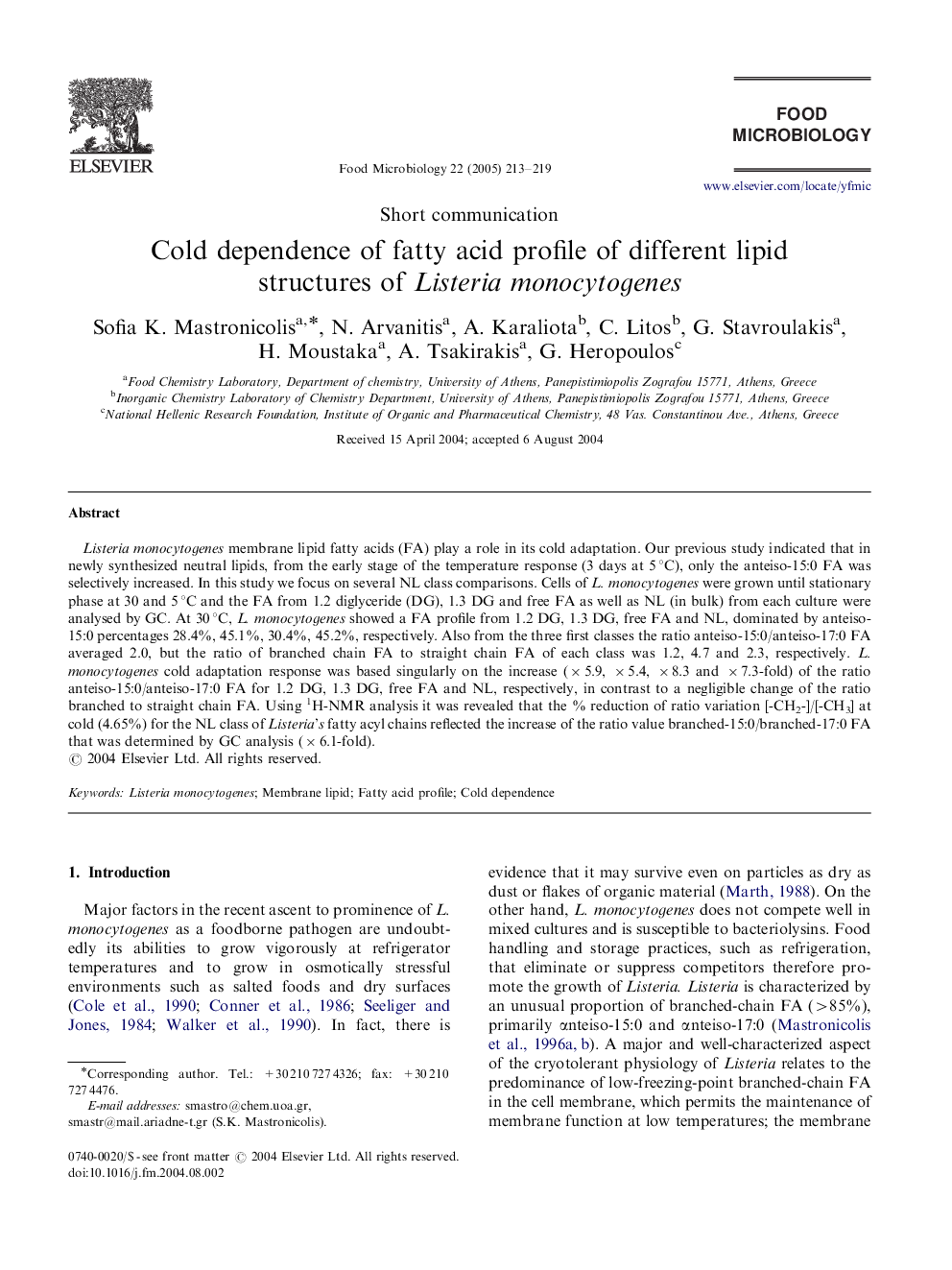| Article ID | Journal | Published Year | Pages | File Type |
|---|---|---|---|---|
| 9441971 | Food Microbiology | 2005 | 7 Pages |
Abstract
Listeria monocytogenes membrane lipid fatty acids (FA) play a role in its cold adaptation. Our previous study indicated that in newly synthesized neutral lipids, from the early stage of the temperature response (3 days at 5 °C), only the anteiso-15:0 FA was selectively increased. In this study we focus on several NL class comparisons. Cells of L. monocytogenes were grown until stationary phase at 30 and 5 °C and the FA from 1.2 diglyceride (DG), 1.3 DG and free FA as well as NL (in bulk) from each culture were analysed by GC. At 30 °C, L. monocytogenes showed a FA profile from 1.2 DG, 1.3 DG, free FA and NL, dominated by anteiso-15:0 percentages 28.4%, 45.1%, 30.4%, 45.2%, respectively. Also from the three first classes the ratio anteiso-15:0/anteiso-17:0 FA averaged 2.0, but the ratio of branched chain FA to straight chain FA of each class was 1.2, 4.7 and 2.3, respectively. L. monocytogenes cold adaptation response was based singularly on the increase (Ã5.9, Ã5.4, Ã8.3 and Ã7.3-fold) of the ratio anteiso-15:0/anteiso-17:0 FA for 1.2 DG, 1.3 DG, free FA and NL, respectively, in contrast to a negligible change of the ratio branched to straight chain FA. Using 1H-NMR analysis it was revealed that the % reduction of ratio variation [-CH2-]/[-CH3] at cold (4.65%) for the NL class of Listeria's fatty acyl chains reflected the increase of the ratio value branched-15:0/branched-17:0 FA that was determined by GC analysis (Ã6.1-fold).
Related Topics
Life Sciences
Agricultural and Biological Sciences
Food Science
Authors
Sofia K. Mastronicolis, N. Arvanitis, A. Karaliota, C. Litos, G. Stavroulakis, H. Moustaka, A. Tsakirakis, G. Heropoulos,
